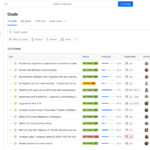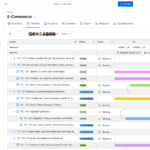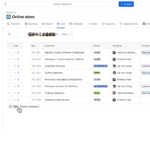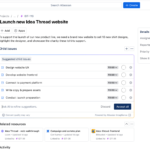A new Jira, just Jira
Hold on… What just happened? As we already told you, Atlassian announced a significant change at its Team 24′ event: Jira Software and Jira Work Management will be merged into a unified product, known simply as Jira. This strategic move is designed to simplify and improve the user experience on both platforms.
By unifying the two products, Jira becomes the most powerful tool for any type of team. From this combination, a more robust Jira emerges, with more functions and new features.
Here’s what this means for current users and what you can expect in the short and medium term.
A brand new experience
The best of both worlds comes together in Jira. Although we will still be able to create both software and business projects, they will all share the same interface and functionalities. Software users will stop making eyes at Work lists and calendars 👀, and the latter will no longer sigh for being able to have detailed plans like they do in Software. Now everyone has everything! To wit:
- Joint goal management to align all teams towards the same place. All teams working together towards aligned, visible and shared objectives is a key element for success. This new all-in-1 Jira facilitates this task.
- Cross-functional plans for both business and software teams to visualize the roadmap to their shared goals. What we used to know as Advanced Roadmap, but with new views.
- Lists, calendars, dashboards… on all projects, no matter what type they are. Business teams will be able to see on the calendar when a new software version is released.
- Incorporation of Atlassian Intelligence (AI), which will make customizable suggestions on how to subdivide Epics into Issues and Issues into smaller tasks.
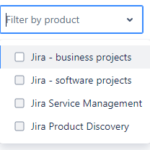 At least for now, it is very easy to know if a project is a Software or a Business project. When we filter in the project list, we will see that we have both typologies well differentiated, as we can see in the box on the left.
At least for now, it is very easy to know if a project is a Software or a Business project. When we filter in the project list, we will see that we have both typologies well differentiated, as we can see in the box on the left.
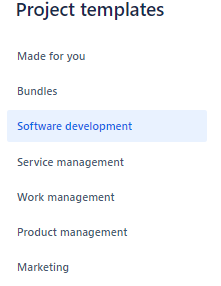
However, it is not that easy to know if we are creating a Software or Business project, since the wizard does not indicate which type it is.
Here is a little trick to make it clearer: whenever you want to create a Software project, select the “Software development” section. All templates in this section except Product Discovery will generate a Software project. The templates in the other sections will result in a Business or Service project, in case you are also a Jira Service Management user.
I’m already using Jira… How does this affect me?
Depending on the product(s) you are using, there are a few things to consider which we look at in more detail below.
- I use Jira Software. Chop-chop, keep going, nothing to see here. Everything that comes in is to add, but it doesn’t change anything in your subscription.
- I use Jira Work Management. This subscription is gone – don’t worry! You still have access to the service until your next cycle expires or until you migrate to the new Jira experience, whichever comes first. In the latter case – that you migrate – you’ll get a 10% discount on the subscription for one year after the switch.
- I use them both. Nothing special with this; the above applies equally to each subscription.
And what do I have to do? What if I don’t want to?
First of all: keep calm. You will receive detailed communications several months in advance, describing the steps and options available, which are as follows:
- Automatic migration. Atlassian will handle the migration automatically in early 2025.
- Early migration. Beginning in August 2024, customers can choose to migrate to the new Jira experience prior to the automatic transition in 2025. Atlassian will provide support to assist with these early migrations.
- Do not migrate. Customers who do not wish to transition to the new Jira can opt out during the designated period (September-October 2024). However, opting out means that they will lose access to Jira Work Management when the subscription expires. It is worth noting that users who access business project functionality with their Jira Software or Jira Service Management subscription will be able to continue to do so without issue even if this option is chosen.
To sum up

The merger of Jira Software and Jira Work Management into a single unified platform, known as Jira, marks a significant step in Atlassian’s mission to improve productivity and collaboration across teams. By
simplifying subscriptions and integrating features, Atlassian seeks to provide a more efficient and cohesive tool for managing projects and workflows. It’s best to prepare for the upcoming changes and take
advantage of early migration options and discounts to ensure a smooth transition.
At TecnoFor we are Atlassian experts and professional Jira arquitects. Some changes might be scary, but we’re here to help you at any migration stage. As we love to say… High flow, low drama 😎👌
![]()
